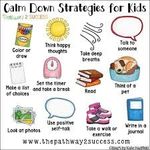Working at home with your child 2020 - West Sussex Autism and Social Communication Team - Ifield Community ...
←
→
Page content transcription
If your browser does not render page correctly, please read the page content below
West Sussex
Autism and Social
Communication Team.
Presents……..
Working at home with your child
2020.Introduction
This guide aims to support parents with a range of ideas to support their children, whom may have social
communication differences/ autism during the COVID-19 Pandemic.
The ideas and support frameworks are not exhaustive but provide a starting point for ideas and ways that may
support your child at home.
Top Tips:
Take care of yourself so you can keep supporting your child or children. Eat well, sleep well...and
breathe!
Routine. An element of predictability is reassuring and helps us to feel safe. It’s good to know that everyday some
things will stay the same and some things will be different.
Be active. Exercising releases ‘feel good’ hormones-endorphins and dopamine
which regulate our emotions. Be creative, use the space you have, watch You
Tube children’s workouts, create mini-workouts, run up and down stairs, get
outside if you can.
Have family time-but also create space. Strike a
balance between having fun family time such as playing
games and watching movies, but also set rules to enable every family member to have some
time alone each day.
Balance screen time with other activities. Ensure your child or children aren't enjoying screen time to the exclu-
sion of everything else.
Coach your child or children through strong emotions. When your child gets upset
or cross, coach them through handling that emotion and try to avoid reacting with
a strong emotion of your own. Teach your child to identify, name and cope with
their stress responses.
Set and stick to boundaries. Set family rules and stick to them consistently. Having family rules and following them
through is vital to maintain healthy, happy families.
Learn a new skill. Let your child choose a new skill to learn, help them find out how to do it,
perhaps on the internet. Learning a new skill gives a sense of achievement which gives a vital
boost to mental health.
Be a good role model. Be aware of what you do and say in front of your children, remember they will see how you
respond during stressful times and it is likely they will respond in the same way. Try to respond to events in a way
that you’d like your child to copy.Anxiety
It is important to appreciate that anxiety is not simply a part of autism but an
independently co-occurring condition that can be addressed in its own right.
With this in mind, during this period of uncertainty and isolation, it will be
important to work with our children to support them to regulate their ‘Intolerance of Uncertainty’ which is
what current research places at the heart of anxiety difficulties in autism.
Briefly, frequent sensory processing differences and difficulties in understanding
one’s own emotions are thought to make the world more uncertain and
unpredictable for autistic individuals, which can be difficult to tolerate, resulting in
anxious responses including fight, flight or freeze type behaviours.
With all this in mind we can first begin to unpick what may be contributing to our
child’s anxiety and then identify how we can begin to support them.
Sensory processing differences
Sensory processing differences are now recognised as part of the Autism Spectrum
Condition. Recent evidence suggests that differences in sensory prediction process-
es are a part of this. So, if children with autism find it hard to predict their sensory
world then they will have more uncertainty which in turn has an impact on their
levels of anxiety. (See following sensory section for more information/guidance on
managing the sensory world).
not understanding feelings
anxiety anxiety
unable to regulate feelings
Emotional recognition and regulation
Many autistic individuals (around 50%) have difficulties identifying and describing their own emotions (which is
known as alexithymia). They may have difficulty recognising the arousal levels associated with emotions (using
their interoceptive sensory system – see following sensory section for further explanation of this). They may
also have difficulty regulating their emotions which may mean they suppress feelings or express them in
inappropriate/challenging ways. You can see then, that there may be a cyclical effect of having feelings you
don’t understand which make you anxious and not being able to regulate your anxious feelings which makes
you more anxious.
What you can do to reduce anxiety:
As well as supporting your child to manage their sensory needs you can also help to reduce their uncertainty.
In the short term, this might include sharing explanations about COVID 19 in a format which matches their level
of understanding. One example can be found through the following link:
https://carolgraysocialstories.com/wp-content/uploads/2020/03/Pandemics-and-the-Coronavirus.pdfAdditional information is also available from the National Autistic Society:
https://www.autism.org.uk/services/helplines/coronavirus/resources/information.aspx
You can also reduce uncertainty by adding more structure and routine to home life – see following pages on visual
structure and routines.
Mindfulness
You can introduce some relaxation activities to reduce emotional arousal
levels – mindfulness Apps and activities can be useful.
The following may be helpful:
• Headspace: Guided Meditation and Mindfulness: https://www.headspace.com/signup?
utm_source=google&utm_medium=cpc&utm_campaign=821964437&utm_content=42127572397&utm_term=19
9115809880&headspace%20app&gclid=CK-r_8-EhtUCFWUq0wodMnkK7w
• Breathing Bubbles: . https://itunes.apple.com/gb/app/breathing-bubbles/id962463836?mt=8
• Headspace: Guided Meditation and Mindfulness: https://www.headspace.com/signup?
utm_source=google&utm_medium=cpc&utm_campaign=821964437&utm_content=42127572397&utm_term=19
9115809880&headspace%20app&gclid=CK-r_8-EhtUCFWUq0wodMnkK7w
•
For more information on anxiety and strategies to support your child ,
refer to the following document for further information:
https://www.city.ac.uk/__data/assets/pdf_file/0010/466039/Anxiety-in-Autism-A5-
guide.pdfLearning.
Structure and Routine
Developing a structure and gentle routine for your child will be of great
comfort at this time when things feel so different. Going from the
structure of school to being at home all the time will be a new
experience for your child which will be full of uncertainty and may increase anxiety.
Ease yourselves into a ‘home learning’ routine gradually, adapting to the changes this brings. Perhaps establish
‘work time’ followed by ‘snack time,’ ’exercise’ and then some ‘free time.’ etc. Showing this visually can be helpful.
Using interests.
Children with Social Communication Differences / Autism are likely to have strong and specialised
interest. Now is an ideal time to use you children's interests to support their learning at home.
• Project work can be based around a special interest. Researching on the internet, finding
facts in books, making ‘fact sheets’ or ‘information leaflets’ is a creative way of presenting work,
either hand written or produced on the computer perhaps in Word or PowerPoint etc.
• Computer learning. If your child enjoys I.T. there are many learning websites you can access. Your child’s
school website will have recommended websites.
• Down Time and Relaxation. Time spent on special interests will be relaxing and calming for your child so en-
sure there are times during the day where your child can switch off and enjoy their special interest.
Visuals
Visuals can be used to support routines, the sequencing of activities (eg getting dressed) and to support
behaviour. Visual prompts and cues can be useful for children who find language and time concepts difficult to
understand.Now and Next Board Visual prompts can be useful in showing children what is expected of them and also to prepare them for what is coming next. Some children find it difficult to move from one activity to another. There may be certain activities that a child doesn’t like, however if you can show them that after this activity they will be able to do some thing that they do like, then it can motivate them to complete the first activity. How to use a Now and Next Board Draw or put a picture (symbol or photo) of the activity you want your child to do at the time on the ‘now’ side and a picture of what they will be doing next on the ‘next’ side. You could use a mini whiteboard to do this, a list or real objects.
Supporting Sensory Integration
Sensory Processing Differences
Children and young people on the Autism Spectrum often experience sensory processing differences. The impact
of these sensory sensitivities can be significant, and, what can be perceived as inappropriate behaviour, may be a
sensory response to an uncomfortable stimulus.
We have 8 different sensory systems and a child may experience processing differences in one
or more systems:
Tactile (touch)
Gustatory (taste)
Olfactory (smell)
Visual (sight)
Auditory (hearing)
Proprioceptive (body awareness)
Vestibular (movement/balance)
Interoceptive (Awareness of internal state e.g. hunger, tem-
perature and emotional feelings)
During this time your child may become easily overwhelmed. They may be taking part
in less physical activity than usual and may have less space. It is likely that they will
benefit from sensory input. It may be that, in the current situation, your child’s sensory
differences present quite differently, as home presents him/her with different sensory
demands to school and the rest of the outside world.
Top Tips:
• Ensure your child has access to regular movement breaks, especially after periods of seated work.
Consider: Jumping Jacks, jumping on a trampoline, wall or chair pushes, animal crawls
• Downtime between tasks will be important.
• Organise a low arousal space for your child to retreat to e.g. a tent/ their bedroom/ a space outside. The social
demands and 1:1 contact may be increased during this time, so this space may be needed
• Include daily sensory sessions in your child’s routine lasting 10—15 minutes.
• Set up a sensory treasure box using items you already have at home using a shoe box or other container. Your
child may like to help decorate their box.
• A choice of calming set of activities may support your child with self-regulation if they start to become over-
whelmed.
• If you notice that your child is becoming distracted during a task/ activity, it may be worth giving them a
sensory break, they may need a chance to reset.Sensory Circuits
A Sensory circuit could be introduced to the day include alerting, organising and
calming activities. Always end with calming activities.
• Alerting: Introduce up and down movements for a short period of time. Jumping Jacks, clapping activities and
games, making faces – open mouth and eyes wide or screwing up face, stamping on the spot, sucking a sour
sweet, eating crunchy food, drinking cold drinks with ice in.
• Organising: Heavy work (including carrying a heavy bag, books, wheelbarrow), wall push-ups with hands and
feet, jumping on trampoline, popcorn jumps (jumping from a squat position and then landing back in a squat
position), wheelbarrow-walking, crawling through tunnels, obstacle course
• Calming Activities: Rocking slowly over a ball on their tummy or rocking/ swaying, tucking legs up and
squeezing, laying under a heavy blanket, soft music (spa CD), big hugs, laying on the floor while an adult rolls
a ball over top giving some deep pressure, Using two fingers on both sides of the spine to give firm
downward strokes ,3-5 times.
Helpful Resources:
• A sensory checklist with activity ideas is available from: https://westsussex-local-
offer.s3.amazonaws.com/public/system/attachments/1116/original/NEW_Sensory_Toolkit.pdf)
• Sensory Strategies: Practical ways to help children and young people with autism learn and achieve by
Corinna Laurie. Published by The National Autistic Society
• Making Sense of Sensory Behaviour by Falkirk Council: https://www.falkirk.gov.uk/services/social-care/
disabilities/docs/youngpeople/Making%20Sense%20of%20Sensory%20Behaviour.pdf?v=201507131117
• https://lemonlimeadventures.com/sensory-break-ideas-for-kids/
• Interoceptive Clip: https://www.youtube.com/watch?v=A0zbCiakjaA
• Tools To Grow OT www.toolstogrowot.com
• Sensory Integration Network www.sensoryintegration.org.uk
• The National Autistic Society – www.autism.org.uk/living-with-autism/understandingbehaviour/ the-sensory
-world-of-autism.aspx.
• The Out of Sync Child www.out-of-sync-child.com
• CRAE at UCL http://crae.ioe.ac.uk/post/130547691038/sensory-sensitivities-in-autism-explained
• Eating- Infant and Toddler Forum https://www.infantandtoddlerforum.org/
• Eating- National Steering Group for childhood feeding disorders (NSG) http://www.nsg-cfd.com/
• Sensory Resources: https://www.chewigem.co.uk/shop/
• Sensory Resources: https://specialneedstoys.com/uk/auditory/noisy-toysYou can also read



























































